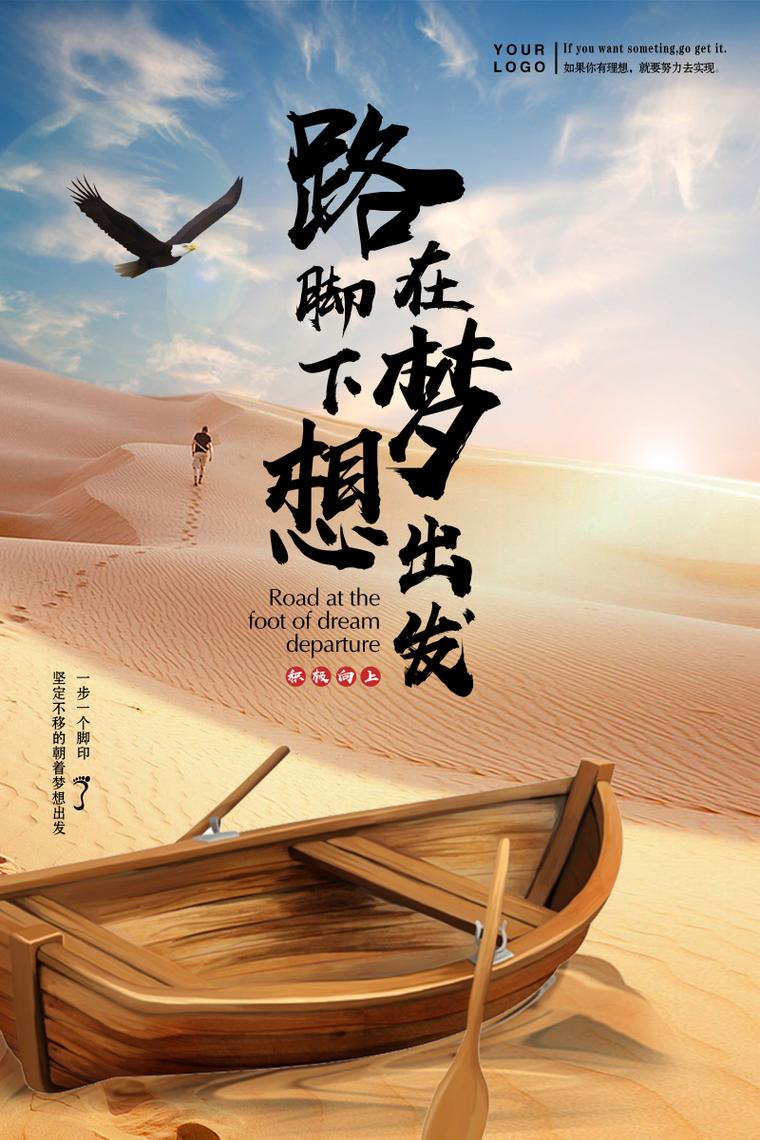
精心整理
精心整理
ChineDragon
DragontotemworshipinChinahasbeenaroundforthelast8,ientsin
Chinaconsideredthedragon(orloong)afetishthatcombinesanimalsincludingthefish,
snake,horandoxwithcloud,thunder,lightningandothernaturalcelestialphenomena.
TheChinedragonwasformedinaccordancewiththemulticulturalfusionprocessofthe
hine,thedragonsignifiesinnovationandcohesion.
对龙图腾他的崇拜在中国大约已绵延了八千多年。中国龙是古人将鱼、蛇、马、牛
等动物与云雾、雷电等自然天象集合而成的一种神物。中国龙的形成与中华民族的
多元融合过程同步。在中国人的心目中,龙具有振奋腾飞、开拓变化的寓意和团结
凝聚的精神。
Dumplings
DumplingsareoneoftheChinepeople’ingtoan
ancientChinelegend,dumplingswerefirstmadebythemedicalsaint---ZhangZhongjing.
Therearethreestepsinvolvedinmakingdumplings:1)makedumplingwrappersoutof
dumplingflour;2)preparethedumplingstuffing;3)
thinandelasticdoughskin,freshandtenderstuffing,delicioustaste,anduniqueshapes,
’sanoldsayingthatclaims,“Nothing
couldbemoredeliciousthandumplings”.DuringtheSpringFestivalandotherholidays,or
whentreatingrelativesandfriends,Chinepeopleliketofollowtheauspiciouscustomof
epeoplewhoshowhighreverenceforfamilylove,having
精心整理
精心整理
dumplingsatthemomenttheoldyearisreplacedbythenewisanesntialpartofbidding
farewelltotheoldandusheringinthenewyear.
饺子是深受中国人民喜爱的传统食品。相传为古代医圣张仲景发明。饺子的制作是
包括:1)擀皮、2)备馅、3)包馅水煮三个步骤。其特点是皮薄馅嫩,味道鲜
美,形状独特,百食不厌。民间有“好吃不过饺子”的俗语。中国人接亲待客、逢
年过节都有包饺子吃的习俗,寓意吉利。对崇尚亲情的中国人来说,“更岁交子”
吃饺子,更是欢度除夕、辞旧迎新必不可少的内容。
Acupuncture
AcupunctureisanimportantpartoftraditionalChinemedicine(TCM).Inaccordance
withthe“mainandcollateralchannels”theoryinTCM,thepurpoofacupunctureisto
dredgethechannelandregulateqiandblood,soastokeepthebody’syinandyangbalanced
uresintraditionalChine
medicinethat“internaldiasaretobetreatedwithexternaltherapy”.Themaintherapy
ofacupunctureinvolvesusingneedlestopiercecertainacupointsofthepatient’sbody,or
adoptingmoxibustiontostimulatethepatient’sacupointssoastostimulatethechannelsand
suniqueadvantages,acupuncturehasbeenhandeddowngeneration
ys,acupuncture,alongwith
Chinefood,kungfu(otherwiknownasChinemartialarts),andtraditionalChine
medicine,hasbeeninternationallyhailedasoneofthe“fournewnationaltreasures.”
针灸是中医学的重要组成部分。按照中医的经络理论,针灸疗法主要是通过疏通经
络、调和气血,来达到阴阳归于平衡,使脏腑趋于调和之目的。其特点是“内病外
治”。主要疗法是用针刺入病人身体的一定穴位,或用艾火的温热刺激烧灼病人的
精心整理
精心整理
穴位,以达到刺激经络。治疗病痛的目的。针灸以其独特的优势,流传至今并传播
到了世界,与中餐、功夫、中药一起被海外誉为中国的“新四大国粹”。
ChineKungFu
Chinekungfu,orChinemartialarts,
isatraditionalChinesportwhichappliestheartofattackanddefenceincombatandthe
eideaofChinekingfuisderived
fromtheConfuciantheoryofboth“themeanandharmony”and“cultivatingqi”(otherwi
knownasnourishingone’sspirit).Meanwhile,italsoincludesthoughtsofTaoismand
ekungfuhasalonghistory,withmulti-variousctsandmanydifferent
boxingstyles,andemphasizescouplinghardnesswithsoftnessandinternalandexternal
ainstheancientgreatthinkers’lls
inwieldingthe18kindsofweaponsnamedbythelatergenerationsmainlyinvolvetheskills
ofbare-handedboxing,suchasshadowboxing(Taijiquan),formandwillboxing
(Xingyiquan),eighttrigrampalm(Baguazhang),andtheskillsofkungfuweaponry,suchas
theskillofusingswords,spears,two-edgedswordsandhalberds,axes,tomahawks,kooks,
prongsandsoon.
中国功夫即中国武术,是将技击寓于搏斗和套路运动之中的中国传统体育项目,承
载着丰富的中国民族传统文化。其核心思想是儒家的中和养气之说,同时兼容了道
家、释家的思想。中国武术源远流长、流派林立、拳种繁多,讲究刚柔并济、内外
兼修,蕴含着先哲们对生命和宇宙的参悟。后世所称十八般武艺,主要指:徒手拳
艺,如太极拳、形意拳、八卦掌等;器械功夫,如刀枪剑戟、斧钺钩叉等。
ChineCharacters
精心整理
精心整理
Chinecharacterswereinitiallymeanttobesimplepicturesudtohelppeopleremember
longperiodofdevelopment,itfinallybecameauniquecharactersystemthat
embodiesphoneticsound,image,idea,tingsystem,
whichwaxtremelyadvancedinancienttimes,beganwithinscriptionsonbonesand
tortoishells,andtheareregardedastheoriginalformsofChinecharacters.
Afterwards,Chinecharacterswentthroughnumerouscalligraphicstyles:bronze
inscriptions,officialscript,regularscript,cursivescript,runningscript,e
charactersareusuallyroundoutsideandsquareinside,whichisrootedinancientChine
ebasicstrokesofChine
charactersare“---“(thehorizontalstroke)“│”(theverticalstroke),“/”(theleft-falling
stroke),“\”(theright-fallingstroke),and“乙”(theturningstroke).
汉字是从原始人用以记事的简单图画,经过不断演变发展最终成为一种兼具音、形、
意韵的独特文字。现存中国古代最早成熟的文字是甲骨文,被认为是现代汉字的初
形。此后,汉字又经历了金文、隶书、楷书、草书、行书等不同的阶段。汉字结构
“外圆内方“,源于古人”天圆地方“的观念。汉字有五种基本笔画,即:横、竖、
撇、捺、折。
ChineChopsticks
ordedhistoryof
ickswerenamedzhuin
okdeceptivelysimpletou,butposssmulti-variousfunctions,
suchasclamping,turningover,liftingup,raking,stirring,scooping,poking,tearing,andso
example,thepartialtoneofchopsticksisoftenudbypeopleasametaphoratweddingsto
精心整理
精心整理
usingaknife
andforkorone’sownhands,apairofchopsticksalsoimpliesthemeaningof“Harmonyis
whatmatters”.ChopsticksarehighlypraidbyWesternersasahallmarkofancientoriental
civilization.
中国人使用筷子就餐的方式在世界上独树一帜。有史记载用筷的历史已有三千多年。
筷子古时称为箸,它看似简单,但却同时具有夹、拨、挑、扒、拌、撮、戳、撕等
多种功能。中国民间视筷子为吉祥之物,如婚俗中将筷子隐喻为快生贵子的祝福等。
与使用刀叉以及手抓的方式不同,成双结对的筷子含有“和为贵“的意蕴。西方人
赞誉筷子是古老的东方文明。
ChineSeal
eChineofficialandprivatealofvarious
dynastieshavedifferenttitles,suchasstamp,zhunote,contract,fu,
alsudbytheemperorsofancientChinawerecalledxi,yin,bao,ingto
historicalrecords,alswerewidelyudduringtheWarringStatesPeriod(475BC-221BC).
Themakingofaalistoengravefonts,suchasalcharactersandofficialscriptandsoon;
orimagesintheformofintaglioandembossmentintotheal,basicallyshapedasroundor
dwithavermilionoverlay,theChinealisnotonlyudindailylife,but
aduallybecoming
oneofChina’suniqueartworks.
印章就是图章。中国历代官、私所用的印章有印信、朱记、合同、符、契等等不同
的称谓,而帝王所用的印章古时称玺、印、宝、章等。据史料记载,印章在战国时
代已普遍使用。印章的制作是将篆隶等字体、图像用阴、阳的形式雕刻而成,形状
以圆、方为主。印章用朱色
精心整理
精心整理
钤盖,除日常应用外,又多用于书画题识,逐渐成为中国特有的艺术形式之一。
ChineEra
TheChineeraisthesymbolthattheChinecalendarusforrecordingandnamingyears.
ThetenHeavenlyStemsare:jia,yi,bing,ding,wu,ji,geng,xin,ren,lve
EarthlyBranchesare:,yin,mou,chen,si,wu,wei,shen,you,xu,
obrvingthelunarmonth,theancientsfoundthatthemoonalwayswazesandwanes
roughly12timesayear,andtwolunarmonthsaccountforabout60days,sotheorderofthe
tenHeavenlyStemsandtheorderofthetwelveEarthlyBranchesareproperlymatchedin
sofrecordingdate,ne
ingtothe
chronologyofthe“tenHeavenlyStems,”2011istheyearof“theventhoftheten
HeavenlyStems”and“thefifthofthetwelveEarthlyBranches”.
天干地支是中国历法中用以记录和命名年岁的方法。十天干为:甲、乙、丙、丁、
戊、已、庚、辛、壬、癸;十二地支为:子、丑、寅、卯、辰、巳、午、未、申、
酉、戊、亥。古人观测朔望月,发现月亮圆缺12次大体上是一年的天数,而两个朔
望月约是60天。古人以十天干与十二地支的顺序依次相配,记录不同年份,60年为
一个轮回。干支纪年法从古沿用至今。按干支纪年法,2011年便是辛卯年。
ChineBeijingOpera
Praidas“OrientalOpera”,
originatedfrommanykindsofancientlocaloperas,
theendofthe19thCentury,BeijingOperaevolvedandtookshape,becomingthegreatest
gOperaisablendofperformingarts---song,speech,
performance,gOperaportraysandnarratestheplotand
精心整理
精心整理
ntypesofrolesinBeijingOperaaresheng(male),
dan(youngfemale),jing(paintedface,male),andchou(clown,maleorfemale).
京剧被誉为“东方歌剧”,是地道的中国国粹。它起源于中国多种古老的地方戏剧,
特别是南方的“徽班”。到了19世纪末,京剧形成并成为中国最大的戏曲剧种。京
剧是综合性表演艺术,集唱(歌唱)、念(念白)、做(表演)、打(武)、舞(舞
蹈)为一体,通过程式化的表演手段,叙述故事,刻画人物。角色主要分生(男性)、
旦(女性)、净(男性)、丑(男性女性皆有)四大行当。
ChineTaoism
nderofTaoismisLaozi,aphilosopherandthinker
wholivedinthelateSpringandAutumnPeriod(770BC-476BC).TaoTeChingwho
authorshiphasbeenattributedtoLaozi,
advocatesthevalueofahumanbeing’slife,recommendsthediscardingofalldesiresand
worriesfromone’smind,andencouragesthecultivationofmoralcharacterandthe
lowingisanexampleofLaozi’sgoldensaying:
Thewaythatcanbetoldofisnotanunvaryingway;
Thenamesthatcanbenamedarenotunvaryingnames.
ItwasfromthenamelessthatHeavenandEarthsprang;
Thenamedisbutthemotherthatrearsthetenthousandcreatures,eachafteritskind.
Truly,onlyhethatridshimlfforeverofdesirecanethecretesnces;
Hethathasneverridhimlfofdesirecaneonlytheoutcomes.
道教是中国土生土长长的宗教。创始人是春秋末期的哲学家、思想家老子。道教以
老子所着的《道德经》为主要经典。道教主张“重人贵生”。崇尚清静无为,修身
精心整理
精心整理
养性。“道可道,非常道。名可名,非常名。无名天地之始;有名万物之母。故常
无,欲以观其妙;常有,欲以观其徼”便是老子的至理名言。
ChineIdioms
Chineidiomsrefertocomprehensiveandintegratedfixedphrasandexpressions.
misa
languageunitthatislargerthanaword,buthasthesamegrammaticalfunctionasaword.
mple,ziqiangbuxi(make
unremittingeffortstoimproveonelf),qingchuyulan(bluerthanindigo),andhoujibofa
(successcomeswithtimeandeffort).Idiomsareextratedfromfolkproverbs,ancientworks
ofliterature,poems,fables,allusions,areapartofthe
Chinelanguagethatareconciandhavegreatvitality.
中国成语是汉语中意义完整的表示一般概念的固定词组或短语。“成语”中的“成”
既是约定俗成。成语是比词大而语法功能又相当于词的语言单位。绝大多数的中国
成语由四个汉字组成,例如:自强不息、青出于蓝、厚积薄发。成语主要从民间谚
语、古代文学作品、诗歌、寓言、典故、名言警句等方面提炼而成,是汉语语言中
精炼而又富有生命力的一部分。
Chinesilk
ryplanting,riculture,silkreelingandthickeningareall
yastheShangandZhouDynasties
(1600BC-256BC),theChinepeople’ssilk-weavingtechniqueshadreachedanextremely
theWesternHanDynasty(206BC-25AD),ZhangQian,anoutstanding
diplomat,travelledaroundcentralAsiaandconnectedChinawiththePersianGulfandthe
Mediterranean,openingupaneweraofSino-foreigntrade,exchangeandcommunication.
精心整理
精心整理
Fromthenon,China’ssilkbecamewellknownforitxtraordinaryquality,exquisite
designandcolor,to,Chinesilkhasbeen
acceptedasasymbolofChinecultureandtheemissaryoforientalcivilization.
中国是丝绸的故乡。栽桑、养蚕、缫丝、织绸是中国古代人民的伟大发明。商周时
期丝绸的生产技术就已发展到相当高的水平。西汉时张骞通西域,把中原与波斯湾、
地中海紧密联系起来,开辟了中外交流贸易的新纪元。从此中国的丝绸以其卓越的
品质、精美的花色和丰富的文化内涵闻名于世,成为中国文化的象征。东方文明的
使者。
ChineClassicalGarden
TheChinecl
akindofenvironmentart,whichsystematicallycombinesartificialmountainsandrivers,
structionstandardofaChine
classicalgardenis“artificialasitis,thegardenmustlookingeniousandnatural.”When
yougosighteinginaChineclassicalgarden,youshouldbeabletoappreciateitsartistic
conceptwhich“makesuofthenaturallandscapetocreatetherealfunofmountainsand
riversforviewers.”Oftheworld’sthreemajorgardensystems,theChineclassical
gardenishailedasoneoftheoriginsoftheworld’sgardenduetoitslonghistoryand
abundantconnotations.
中国园林是把人造的山水、植物、建筑等与自然地貌有机结合的环境艺术,是我国
古代建筑艺术的珍宝。其建造原则是“妙极自然,宛自天开”。游赏中国古典园林,
能充分领略“假自然之景,创山水真趣”的园林意境。在世界三大园林体系中,中
国园林历史悠久、内涵丰富,被誉为世界造园史上的渊源之一。
TheFourTreasuresoftheStudy
精心整理
精心整理
Thewritingbrush,inkstick,inkstone,andpaperwererequisitetreasuresinthestudyof
thescholarsofancientChina,andtheyareoftenreferredtoasthe“FourTreasuresofthe
Study.”ThewritingbrushandinkstickhavebeenudbytheChinetowriteandpaint
since5,inDynasty(221BC---206BC),peoplealreadyudfeathers
theHanDynasty
(206BC-220AD),aperwasinvented
bytheChine,bambooslips,woodentablets,brocadeandsilk,whichoriginallyfunctioned
aswritingsurfaces,stonewasfirstdevelopedwiththeuof
heSongDynasty(960AD---1279AD),the“FourTreasureof
theStudy”particularlyreferredtohubi,thewritingbrushproducedinHuzhou,Zhejiang
province;huimo,theinkstickproducedinHuizhou,Anhuiprovince;xuanpaper,akindof
paperproducedinXuanzhou,Anhuiprovince;andduanyan,theinkstonemadein
Zhaoqing,Guangdongprovince(ZhaoqingwaarliercalledDuanzhou).Indeed,theFour
TreasuresoftheStudy”havewrittinthewholeChinecivilization,asitis.
笔墨纸砚是中国古代文人书房当中必备的宝贝,被称为“文房四宝”。用笔墨书写
绘画在中国可追溯到五千年前。秦时已用不同硬度的毛和竹管制笔;汉代以人工制
墨替代了天然墨;有了纸张以后,简牍锦帛逐失其用;砚台则随笔墨的使用而发展。
“文房四宝”到宋朝以后特指湖笔、徽墨、宣纸、端砚。可以说文房四宝书写了整
个中华文明。
“十二生肖”英语怎么说?
自小我们就知道“十二生肖”的故事,可是,如今向老外讲什么是“十二生肖”,怎么比登天还难?什么猪啊、
狗啊、老虎啊,绕了半天弯儿,越讲他越糊涂。别急,下面这段文字或许能帮您解燃眉之急。
精心整理
精心整理
ItissaidBuddha(theultimateEmperorforthewholeuniverinChinelegend)oncecalledtogetheralltheanimalson
elveanimalsturnedup:therat,theox,thetiger,therabbit,thedragon,thesnake,
thehor,thesheep,themonkey,therooster,,beingthesmartest,jumpedontopoftheoxtobe
thefirstonetoarrive.
Asareward,theBuddhagaveeachanimalayearinthecycleanddeclaredthatanyoneborninthatyearwouldremble
tion,rsof11pmto1:00
amisbyRat,mentsoftheplanet:wood,fire,air,water,goldandeartharealso
integratedintotheanimalZodiacsigns.
在上述介绍里,您可能会看到“zodiac”一词,其实啊,它就是让老外了解“十二生肖”的契机所在。“十二生肖”相
应的英文表达是“theChineZodiac”。
“Zodiac”一词来自希腊语“zodiakos”(动物园),在希腊人眼中,星座是由各种不同的动物形成,这也是十二个
星座名称的由来。由此,中国本土化的“zodiac”——theChineZodiac——自然就是指“十二生肖”了。
?英语中,当谈个人出生的属相时,表达为“Whatanimalsignwereyoubornunder?你
属什么?IwasbornintheyearoftheCock/MineistheCoak.我属鸡。”十二生
肖的12种动物在汉语中只有一个:鼠:Rat,牛:Ox,虎:Tiger,兔:Hare,龙:Dragon
,蛇:Snake,马:Hor,羊:Sheep,猴:Monkey,鸡:Cock,狗:Dog,猪:Boar。
汉语中,人们往往以十二生肖中的动物来比喻人,即把不同(性格、特征、习性等)的人
比作动物,如常以“毒如蛇蝎”,“笨猪”、“胆小如鼠”来比喻心毒手辣的人、笨人、
胆小怯懦的人等。英语中同样可用十二生肖中的动物喻人,其所表达的意思更加广泛而有
趣。现简述如下:你的生肖属什么?Whatsignwereyoubornunder?
[anyofthetwelveanimals;reprentingthetwelveEarthlyBranches,udtosymbolizetheyearinwhichapersonisborn]
我属猪,应回答为,iwasbornintheyearofpig
精心整理
精心整理
生肖animalsignofthezodiac????
???Rat?charm,?子鼠
Ox?patient,?丑牛
Tiger?nsitive,?寅虎
Rabbit?articulate,?卯兔
Dragon?healthy,?辰龙
Snake?deep,?巳蛇
Hor?popular,?午马
Goat?elegant,?未羊
Monkey?clever,?申猴
Rooster?deep?thinkers,?酉鸡
Dog?loyalty,?戌狗
Pig?chivalrous.?亥猪
本文发布于:2023-03-12 02:24:26,感谢您对本站的认可!
本文链接:https://www.wtabcd.cn/zhishi/a/1678559066137872.html
版权声明:本站内容均来自互联网,仅供演示用,请勿用于商业和其他非法用途。如果侵犯了您的权益请与我们联系,我们将在24小时内删除。
本文word下载地址:用英语介绍中国.doc
本文 PDF 下载地址:用英语介绍中国.pdf
| 留言与评论(共有 0 条评论) |